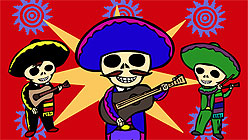This week at Berkeley’s Pacific Film Archive Theater, guest curator Karl Cohen will introduce audiences to a wealth of animated shorts, all produced in the Bay Area, all vastly removed from what we have come to think of as animation in the era of Pixar and Dreamworks.
The two-part program of 25 short works arose after Cohen — president, among other roles, of the San Francisco branch of ASIFA (International Animated Film Association) — prepared a screening of experimental animation for the PFA’s 2010 Radical Light series. Works shown at that event covered the late 1940s to the late 1980s, but Cohen wanted more. “So much is happening right now,” he realized. It was time to bring the program up to date.
Cohen’s selections are not the result of a single curatorial theme — the featured shorts are a wonderfully eclectic mix — but the screenings evince his own enthusiasm and respect for the works presented. According to Cohen, Bay Area Animation is best summed up as a “collection of individual personalities and personal pursuits executed with a great deal of mastery.”
Without corporate oversight and the pressure to succeed commercially, independent animators are both blessed and cursed. While they might have the freedom to create highly personal and thematically challenging animations, the distribution channels available to larger productions are simply not open to them. Nights like the Bay Area Animation screenings are few and far between, relying on the dedication of people such as Karl Cohen to pull these disparate artworks together into a persuasive argument for the persistence of independent animation.

Quasi at the Quackadero




